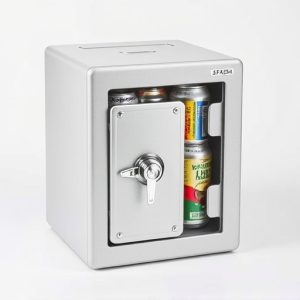Hidden Compartments: Unveiling Discreet Storage in Everyday Products
Covert storage systems, hidden within everyday objects like hairbrushes, offer discreet security for…….
Covert storage systems, hidden within everyday objects like hairbrushes, offer discreet security for valuables and sensitive information. A "Hidden Compartment in Hairbrush Tutorial" showcases how ordinary items can be transformed into secure depositories, blending authentic design with innovative craftsmanship techniques like pressure-sensitive panels. While these systems provide enhanced privacy in the digital age, ethical considerations around misuse and privacy invasion prompt users and designers to balance functionality with responsible use.
Uncover the intriguing world of covert storage systems, where secrecy meets innovation. This article explores a discreet approach to hiding valuable items within everyday products, specifically focusing on a hidden compartment in a hairbrush tutorial. We delve into the concept of integrating secret stash spots into common artifacts, enhancing security and functionality. From understanding the mechanics of these systems to their practical applications and ethical considerations, this guide offers an insightful look at the art of concealment.
- Understanding Covert Storage Systems: A Discreet Approach to Secrecy
- The Concept of Hidden Compartments in Everyday Products
- Designing a Fake Hairbrush with Covert Storage Capabilities
- Practical Applications and Ethical Considerations for Secret Stash Spots
Understanding Covert Storage Systems: A Discreet Approach to Secrecy
Covert storage systems, also known as hidden compartments, are designed to offer a discreet and seemingly innocuous way to conceal valuable items or sensitive information. These innovative solutions have gained popularity due to their ability to blend seamlessly into everyday objects, making them an attractive option for those seeking secrecy. For instance, a simple-looking hairbrush could contain a hidden compartment perfect for stowing away small treasures or vital documents—a feature that can be especially appealing to travelers or individuals in need of secure storage on the go.
The beauty of these systems lies in their versatility and subtlety. By integrating them into everyday items like cosmetics cases, keychains, or even books, they provide a level of discretion that traditional safes or locking boxes cannot match. This subtle approach ensures that only the intended recipient with knowledge of the hidden mechanism can access its contents, making it an effective solution for securing personal belongings or confidential data.
The Concept of Hidden Compartments in Everyday Products
In today’s world, where security and privacy are paramount, the concept of hidden compartments has evolved beyond its traditional connotations. Everyday products, seemingly innocuous at first glance, can secretly harbor spaces for stowing away items—a design feature known as a covert storage system. This innovative approach to safety and secrecy is not just theoretical; it’s a practical solution for individuals seeking secure places to keep their belongings hidden.
Take, for instance, the simple hairbrush. With its sleek handle and bristles, it appears as any ordinary grooming tool. However, with a little modification and a hidden compartment in hairbrush tutorial, it can transform into a safe haven for discrete storage. This design feature is particularly appealing for travelers, those with limited space, or individuals who need secure places to keep valuables while on the move.
Designing a Fake Hairbrush with Covert Storage Capabilities
Designing a fake hairbrush with covert storage capabilities involves more than just mimicry; it’s about integrating functionality seamlessly. The first step is to study authentic hairbrush designs, considering materials, ergonomic shapes, and color schemes that blend in with real products. By analyzing these aspects, you can create a convincing replica that doesn’t raise suspicion. Incorporate a hidden compartment by strategically placing a slim, concealed space within the brush handle or even the bristles themselves. This could be used for stowing small items like USB drives, memory cards, or other compact electronics. Utilize innovative materials and craftsmanship techniques to ensure the compartment is secure, yet easily accessible through discreet mechanisms such as pressure-sensitive panels or hidden flaps.
Practical Applications and Ethical Considerations for Secret Stash Spots
In today’s digital age, where privacy is a growing concern, practical applications for covert storage systems have emerged beyond mere fiction. From secure document hiding places to discreet stashing of valuable items, these innovative designs offer unique solutions for keeping secrets safe. One notable example is the hidden compartment in a hairbrush tutorial—a seemingly innocuous beauty tool that transforms into a secure vault for small belongings. This practical approach showcases how everyday objects can double as secret stash spots, appealing to those seeking creative and subtle ways to protect their possessions.
However, alongside these practical considerations, ethical debates arise regarding the use of such systems. The very nature of covert storage raises questions about privacy invasion and potential misuse. Accessing someone’s personal items without their knowledge is a sensitive issue, especially when it comes to securing private documents or assets. As designers and users, it’s crucial to strike a balance between functionality and ethical boundaries, ensuring that secret stash spots are employed responsibly and with full consent, preserving both privacy and peace of mind.
Covert storage systems, like hidden compartments in everyday products such as a hairbrush, offer unique solutions for discreetly securing small items. As demonstrated through our fake hairbrush design tutorial, these innovative techniques can range from creative DIY projects to industrially produced secrets stash spots. While practical applications are vast, it’s crucial to consider the ethical implications and use these capabilities responsibly. In today’s world, knowing how to navigate and understand these hidden compartments is a valuable skill that combines functionality with discretion.


